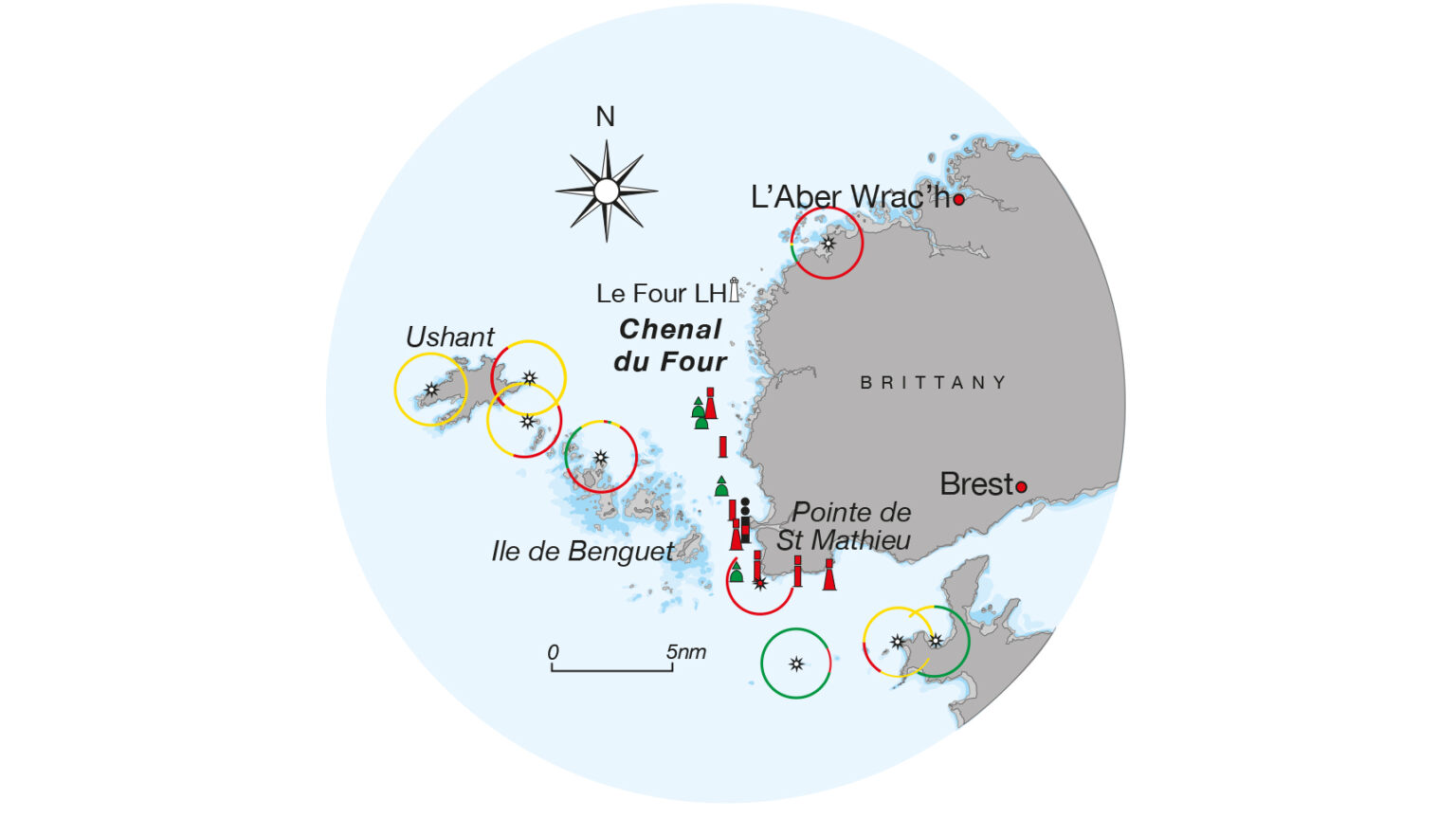Thus, as a final thought, a reliable exploration of the seas embodies the blend of tradition with modern technology, ensuring that sailors have all they need to enjoy life’s adventures by the water. Whether passionate about fishing, sailing, or merely soaking up the sun, the sea welcomes all who dare to embark on her waves.
Entering a harbor with a navigation electronics malfunction can pose a significant risk to sailors, especially when time is of the essence and conditions deteriorate. Understanding how to handle such situations is crucial for ensuring safety on the water.
The Scenario
Picture this: A group of sailors is navigating their 10m cruising yacht from the Solent to Brest, planning to anchor for the night at L’Aber Wrac’h. They have favorable tidal streams prompting a passage south through the Chenal du Four, but the wind is light, creating an impending sense of urgency as the sun sets.
The crew is relying on a paper chart and an old chartplotter, which, unfortunately, has a history of failure. As they approach the iconic Le Four lighthouse, fog begins to envelop the area, reducing visibility. The tension rises when the plotter screen goes blank, leaving them in a precarious position with only a VHF radio to relay their latitude and longitude.
Assessing the Risks
With visibility down to half a mile and a current running south at approximately three knots, the crew faces a challenging decision: attempt to safely enter the harbor or stall until conditions improve. While many might panic in such circumstances, a measured approach is necessary.
There are two primary options in this situation:
- Sailing North: The simplest option entails slowly making headway against the current to reach clearer waters. This could involve navigating back to where larger vessels are not a threat. However, caution is required as there may be shipping traffic further north.
- Continuing South Through the Chenal du Four: This route can be challenging due to strong tidal flows. It requires keen preparation. As the crew determines their plan, maintaining control against the tidal stream while evaluating their position becomes essential.
Plotting a Course
To navigate effectively without reliable electronics, sailors can revert to traditional methods. The numerical data from the radio must be quickly plotted onto the paper chart. One effective technique is to create a grid of latitude and longitude lines on the chart, marking significant points to keep track of the yacht’s position.
As they sail or motor slowly against the current, the crew must remain vigilant. All crew members should be on deck, using binoculars to spot buoys, other vessels, and potential hazards. Regularly plotting their position on the chart will provide a clearer picture of whether they remain in safe navigational waters.
Historical Context
Before modern navigation tools like GPS, sailors often relied on similar techniques to find their way through fog and rough waters. Understanding navigation fundamentals, including reading charts and recognizing prominent landmarks, was essential for safe marine travel. The art of navigation has evolved significantly, but the core principles remain invaluable.
Safety First
The priority in any challenging sailing situation is safety. For those embarking on their own sea adventures, being equipped with both modern tools and traditional knowledge will enhance not only safety but enjoyment as well. The unpredictable nature of the sea necessitates that sailors remain adaptable, competent, and ready to face unforeseen challenges.
Leveraging platforms like GetBoat allows sailors to dive into a pool of options, whether seeking to rent a boat or charter a yacht. Giving flexibility and a choice of vessels ensures that sailors can make the most of their time on the water while prioritizing safety and comfort on their journeys.
Végső gondolatok
Experiencing a new maritime location is often multifaceted. It invites one to immerse in local culture, appreciate nature, and capture the rhythm of life across different geographies. This holds true as sailors navigate the unique features of every inlet, bay, and lagoon. If planning another trip to the sea, consider the advantages of boat rentals, as every waterway offers insights into the region, much like its food, architecture, and people. Explore options on GetBoat.com to find the perfect vessel that aligns with your adventure.
A safe and enjoyable journey starts with the right preparation and knowledge. Sailing professionals must continually hone their skills and techniques to navigate effectively through any challenge, allowing them to fully embrace the freedom of the open water. Evaluating potential hazards, whether electronic or environmental, will empower sailors to make informed decisions for a fantastic nautical experience.
Charting a New Course
Understanding how to navigate challenging situations can greatly impact your sailing experience and readiness. This understanding ties directly to responsible sailing practices and efficient nautical tourism, encouraging more participants to explore the water confidently. The knowledge gained through practice and caution enhances future adventures while cultivating a community of proficient, passionate sailors eager for exploration.
Thus, as a final thought, a reliable exploration of the seas embodies the blend of tradition with modern technology, ensuring that sailors have all they need to enjoy life’s adventures by the water. Whether passionate about fishing, sailing, or merely soaking up the sun, the sea welcomes all who dare to embark on her waves.

 Navigating the Challenges of Malfunctioning Navigation Systems">
Navigating the Challenges of Malfunctioning Navigation Systems">
